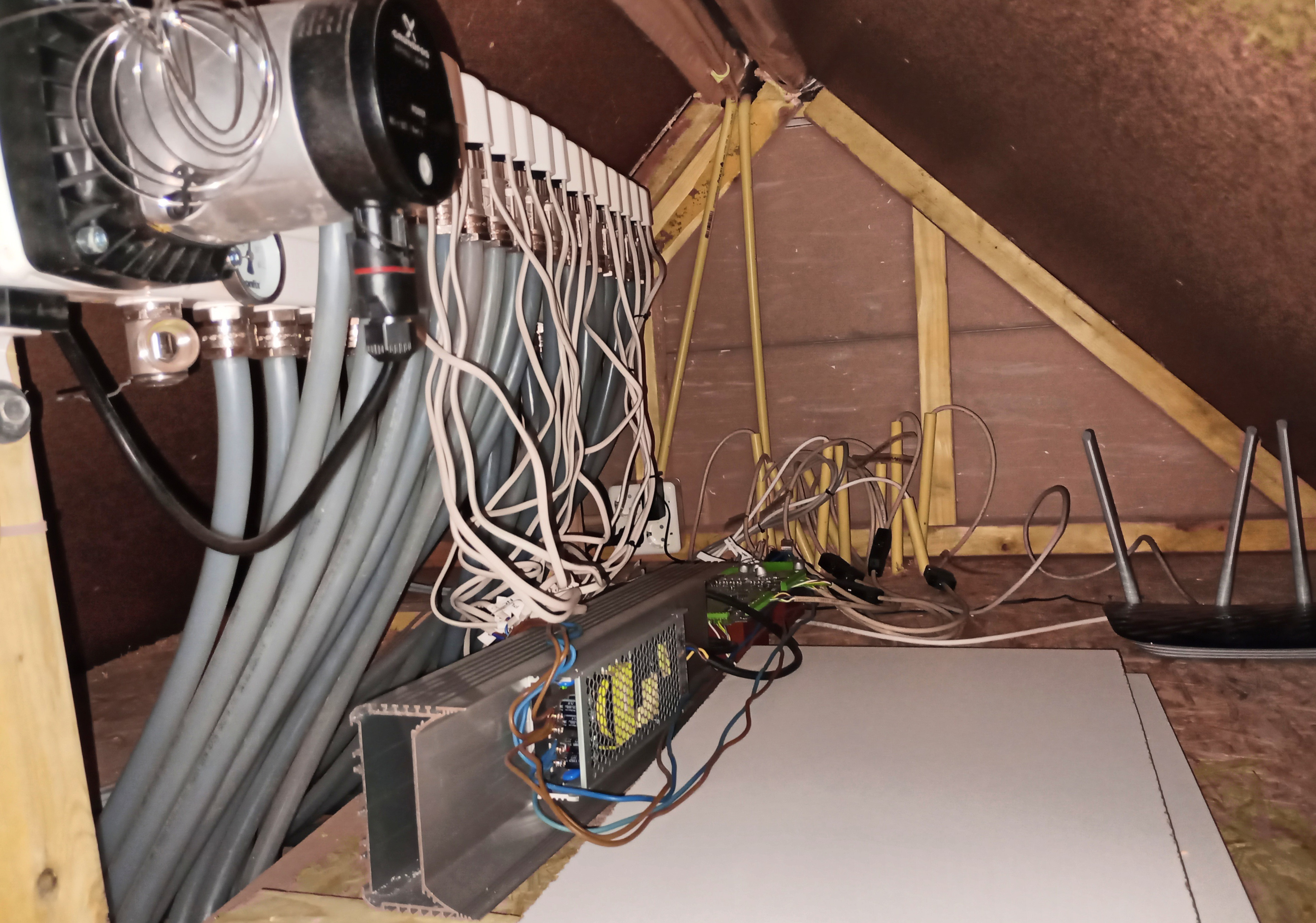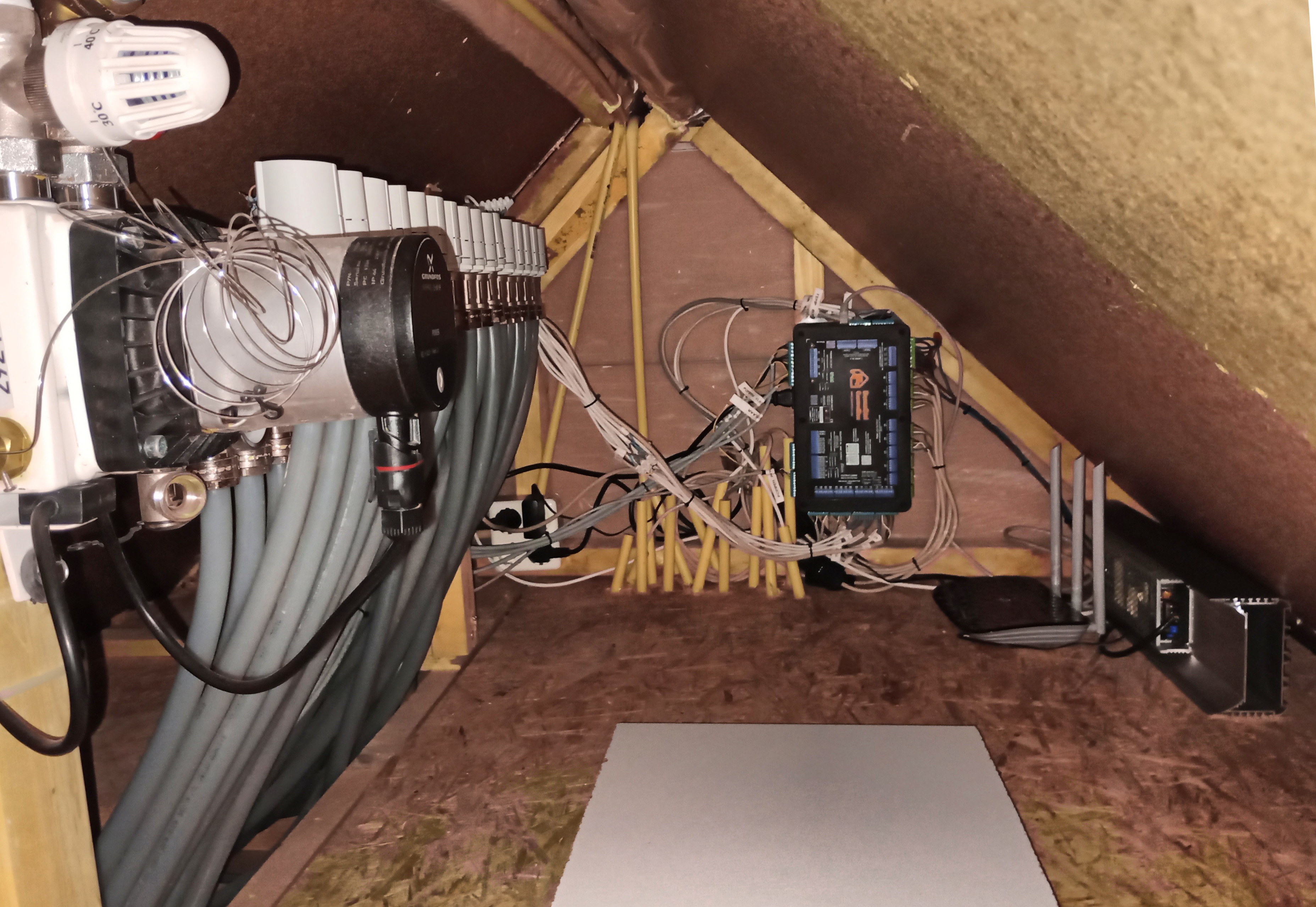ControlBox is what you need to control hydronic radiant floor heating systems with Home Assistant. It is designed to control thermal valves, hydraulic PWM pumps, and related RFH devices. It can read large numbers of 1-wire temperature sensors over long cables (>6 m). ControlBox also contains 32 LED-strip output channels, providing up to 2 kW output.
Its integration with Home Assistant gives you complete control over the heating peripherals used in your house. With Home Assistant’s advanced scheduling and control features, you can schedule your house’s heating more efficiently, which will help you conserve energy and save money.
The inputs and outputs are considered a core functionality of ControlBox, and they are all provided by hard-wired connections. This ensures maximum reliability so you can always control your radiant floor heating system.
Optimize Your Energy Consumption
With air conditioning and radiant floor heaters on one Home Assistant network, the opportunities for fine-tuning your home’s temperature are almost endless. By installing ControlBox in your home, you can:
- Implement a software thermostat per room; no additional hardware is required as the user can use the native Home Assistant app on a smartphone to control the temperatures
- Schedule floor heater systems for automatic pre-heating so rooms are kept comfortable only when required. If the temperature can be lowered up to 3º C over 12 hours per day, this could reduce energy consumption by up to 7% during the winter
- Automatically switch off the pumps for floor heater systems when no heat is requested to save even more energy
- More efficient regulation of solar heat collectors by accurately setting the switch-on time with software PID regulator, particularly useful on cold and cloudy days for effectiveness
- Automatically switch off floor heaters in a room when the wood stove or other heat source is on
…and whatever other scenarios you can dream up.
Features & Specifications
ControlBox is powered by a Raspberry 5 4 GB with an NVMe SSD, running Home Assistant. Alternatively, ControlBox can be used with a W32-ETH01 board running ESP32 Home. It has the following IO:
- Mains voltage input
- 4x 1.5 A mains voltage output
- 16x 24 V AC/500 mA output for floor heater valves and 24 V AC peripherals
- 3x optoisolated GPIO output, 2x optoisolated PWM output
- Max voltage: 24 V DC. Pullup to 5 V DC or 12 V DC can be configured via a jumper or external supply
- 3x optoisolated GPIO input. Voltage: 5-24 V DC, max current 16 mA
- 4x LED power input
- Max voltage: 24 V DC, max current: 20 A per pin. Total power capacity 2 kW
- 32x PWM controlled outputs for LED strips. Max. voltage: 24 V DC, max current 10 A per connector
- Configurable PWM frequency, default 200 Hz
- 2 channels to 1-Wire line drivers
- Each connector: 3x data pin, 2 x 5 V pin, 3x GND pin
- Data line voltage: 5 V, max. 20 mA (parasitic mode allowed)
- Power line max. 500 mA / 5 V for both channels simultaneously
- Half-duplex RS485 communication bus (5 V)
- 433 Mhz superheterodyne transmitter & receiver modules for communication with wireless peripherals like 'ClickOnClickOff'
 Anton Verburg
Anton Verburg
